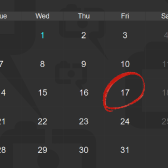A compelling portfolio is vital for photographers who showcase their work and attract clients. However, gathering, organising, and editing your documents can often feel daunting. The right tools streamline this process, allowing you to focus on what truly matters: your creative output. This guide will explore how effective document editing can elevate your portfolio, making it not just a collection of images but a powerful marketing tool.
The Importance of a Well-Organised Portfolio
A portfolio serves as a potential client’s first impression. It’s not merely a showcase of your talent; it represents your brand and professionalism. An organised and polished portfolio can set you apart from competitors, so it’s crucial to ensure your documents are clear, concise, and visually appealing.
To create a standout portfolio, consider categorising your work by style, genre, or project type, making it easy for viewers to navigate. Utilising an organised structure maximises impact and helps maintain viewer engagement. For instance, placing your strongest images at the beginning immediately captures attention, while grouping similar works creates a cohesive viewing experience.
Descriptive texts should enhance the visual content without overwhelming it. Clearly articulate the context of each project, including your approach, the challenges faced, and the outcomes achieved. This narrative adds depth to your portfolio and showcases your storytelling skills, a crucial element of photography.
Transforming Your Content into Engaging Formats
When it comes to showcasing your work, presentation is key. Effective document editing enables you to convert your images into formats tailored for different purposes, whether for online platforms, print presentations, or client proposals. This versatility allows you to cater to specific audiences and venues effectively.
After converting your files, consider enhancing them with engaging descriptions, project details, and insights into your creative process. This added context provides valuable information and helps potential clients understand your unique approach and skills. For example, include the story behind the photograph rather than simply presenting it. Explain the concepts that inspired you, the techniques you employed, and how the final image reflects your vision.
Additionally, having a tool that facilitates document conversion from a different format to a more editable format, like PDF to Word tool, can make adjustments simple and seamless.
Consider how different formats can change the way your work is perceived. Digital portfolios allow for interactive elements, such as slideshows or embedded videos, providing a dynamic experience. In contrast, a printed portfolio can convey a tactile quality that speaks to craftsmanship. Understanding these nuances allows you to tailor your content to the medium that best suits your audience.
Showcasing Diversity in Your Work
A strong portfolio should reflect your skills and the diversity of your photographic style. Including a range of projects can demonstrate your versatility and attract a broader client base.
Consider featuring different genres of photography, such as portraits, landscapes, or commercial work, to showcase your ability to adapt to various contexts. Ensure that each section of your portfolio is clearly labelled, allowing potential clients to navigate easily through your diverse offerings.
Highlighting your range can also include showcasing collaborative projects or community work. By illustrating your adaptability and willingness to take on new challenges, you make your portfolio more engaging and demonstrate your photography growth.
Customising Your Brand Identity Through Documentation
Your portfolio is an extension of your brand. Customising the look and feel of your documents reinforces your identity and makes your work memorable. Consistency in fonts, colours, and layouts can create a cohesive look that resonates with your target audience.
When designing your portfolio, select visual elements that reflect your style and personality. This could involve creating a unique logo, choosing a specific colour palette, or adopting a font style that encapsulates your brand. Such attention to detail fosters professionalism and can significantly enhance your credibility in a competitive market.
In addition to visual elements, your written content should also reflect your voice. Consider the tone and language you use in your descriptions and narratives. Let that spirit flow into your writing if your photography is whimsical and fun.
On the other hand, if your work is more serious and artistic, ensure that your wording mirrors that sentiment. This alignment between visuals and text strengthens your brand identity and creates a memorable experience for viewers.
Leveraging Online Tools for Document Editing
Numerous online tools simplify document editing, making it easier for photographers to create professional portfolios that stand out in a competitive market. From graphic design software to document management systems, these resources can streamline your workflow and enhance the quality of your presentations with minimal effort.
Utilise design platforms that offer user-friendly templates specifically tailored to portfolios. These tools allow you to customise layouts, manage image placements, and add text effortlessly while ensuring a consistent aesthetic.
Online editing software often includes collaboration features, enabling you to work simultaneously with team members or mentors. This collaborative approach ensures your portfolio is polished and refined, reflecting your best work and facilitating seamless feedback throughout the editing process.
Practical Tips for Effective Document Editing
Effective document editing is the backbone of a compelling portfolio. By implementing key strategies in document preparation, you can create a polished portfolio that resonates with potential clients and showcases your artistic vision.
Choose the Right Document Format
The format of your documents can significantly impact their accessibility and presentation. For example, using a widely accepted file type ensures potential clients can easily view your portfolio without technical difficulties. Consider the purpose of each document and select a format that best suits your needs. For instance, formats that load quickly and display consistently across devices are essential if you present online.
Maintain Quality and Consistency
Always ensure that your images are high resolution, even after conversion. Poor image quality can deter clients and diminish the overall impact of your portfolio. Maintaining a consistent style across your images—whether through colour grading, exposure, or composition—will project a sense of professionalism. Consistency enhances visual appeal and reinforces your unique style.
Seek Constructive Feedback
Sharing your portfolio with trusted peers or mentors before finalising it can provide valuable insights. They might notice aspects you overlook or offer suggestions to enhance your presentation. Constructive criticism is invaluable for growth, so be open to feedback and willing to make adjustments as needed. This collaborative approach can lead to a stronger final product.
Keep It Updated
Regularly reviewing and updating your portfolio is crucial to reflect your most recent work and experiences. An up-to-date portfolio demonstrates a commitment to your craft and shows you are actively engaged in your field. Additionally, consider highlighting new skills or techniques you have learned since your last update. This keeps your work fresh and showcases your growth as an artist.
Incorporating Personal Projects into Your Portfolio
Personal projects often reflect your true creative vision and passion, setting you apart from commercial work. Including these projects in your portfolio can offer potential clients insight into your artistic motivations and unique style.
When curating personal projects, choose those that resonate with your brand identity, ensuring they complement your commercial work. Additionally, describe the inspiration behind these projects and the skills you developed while working on them. This adds depth to your portfolio and engages viewers more personally, allowing them to connect with your vision.
By blending personal and professional work, you create a well-rounded portfolio showcasing your technical skills and creative spirit.
|
When you purchase through links on our site, we may earn an affiliate commission. Here's how it works. |











